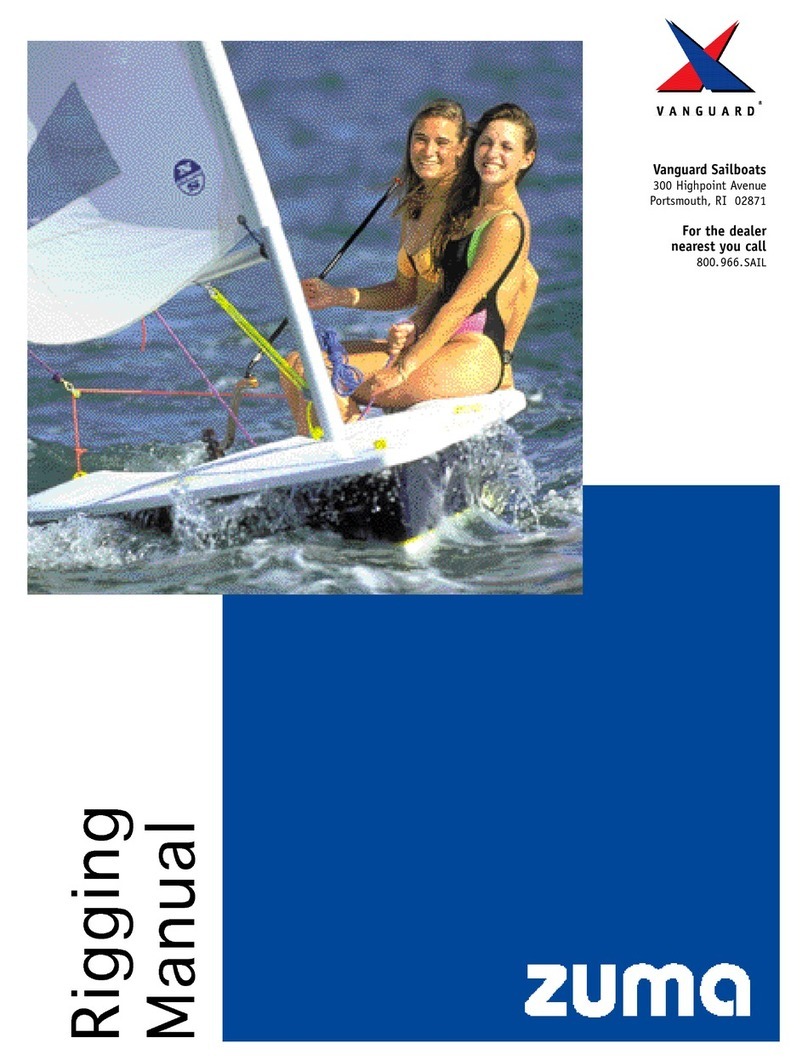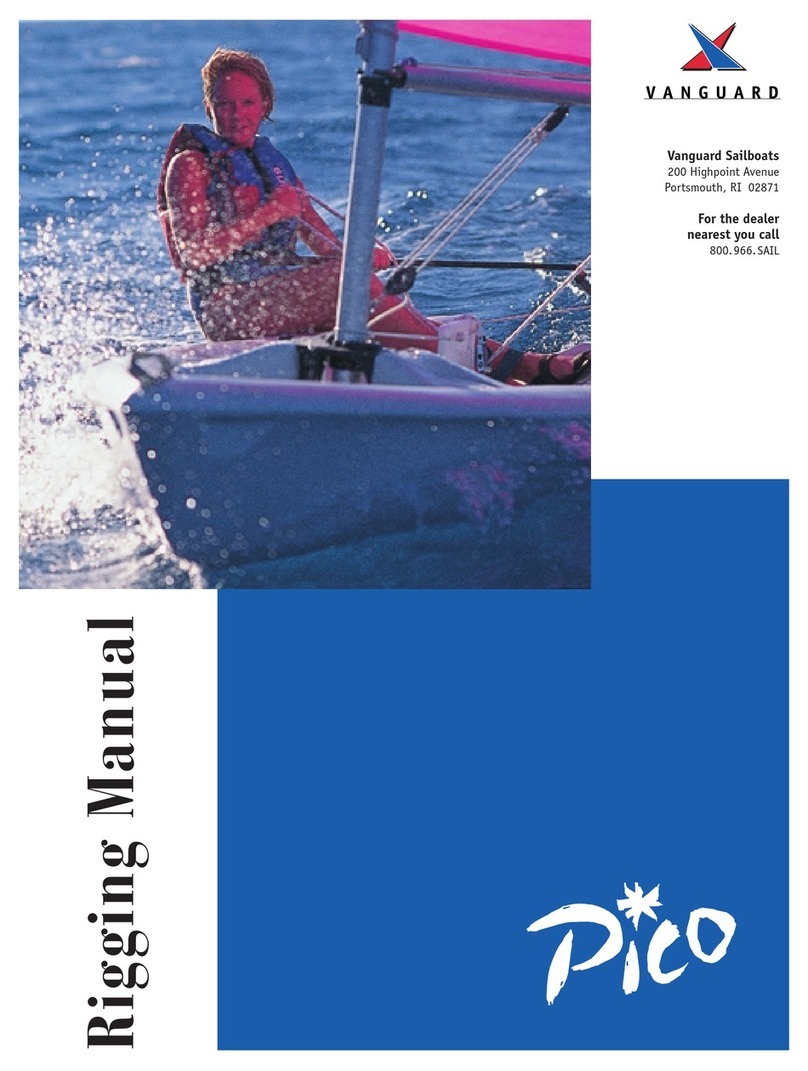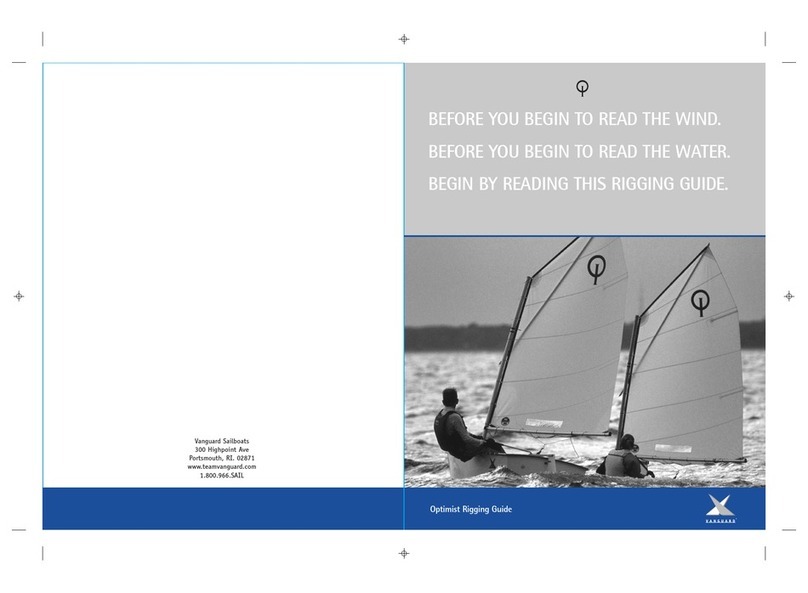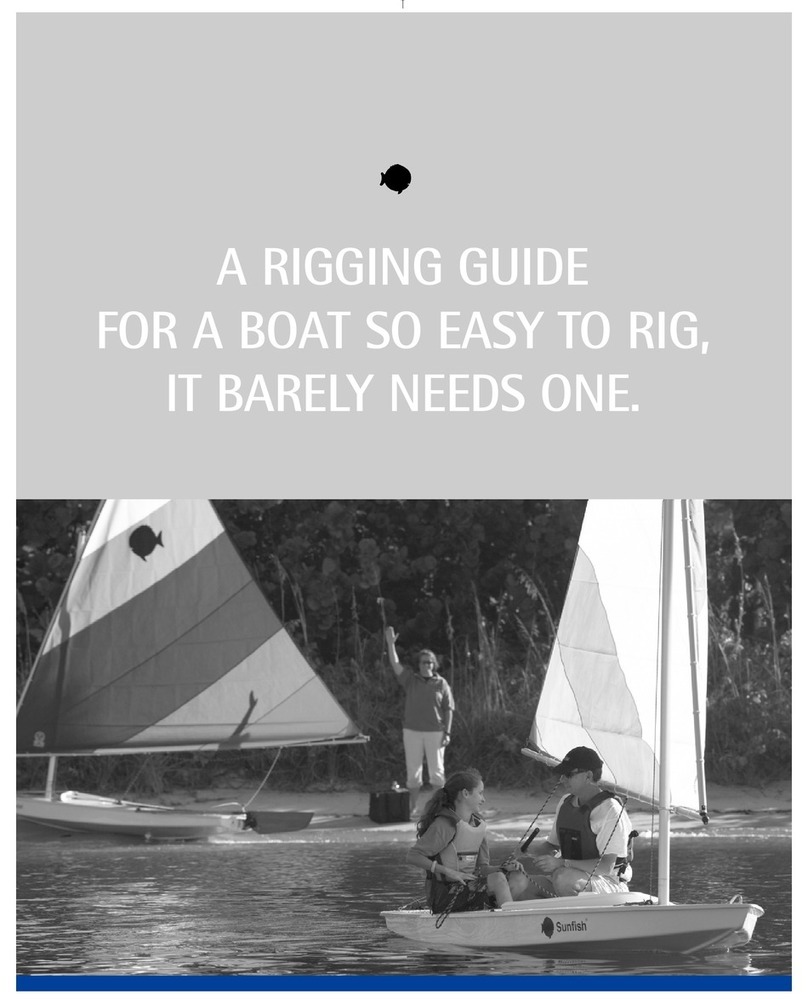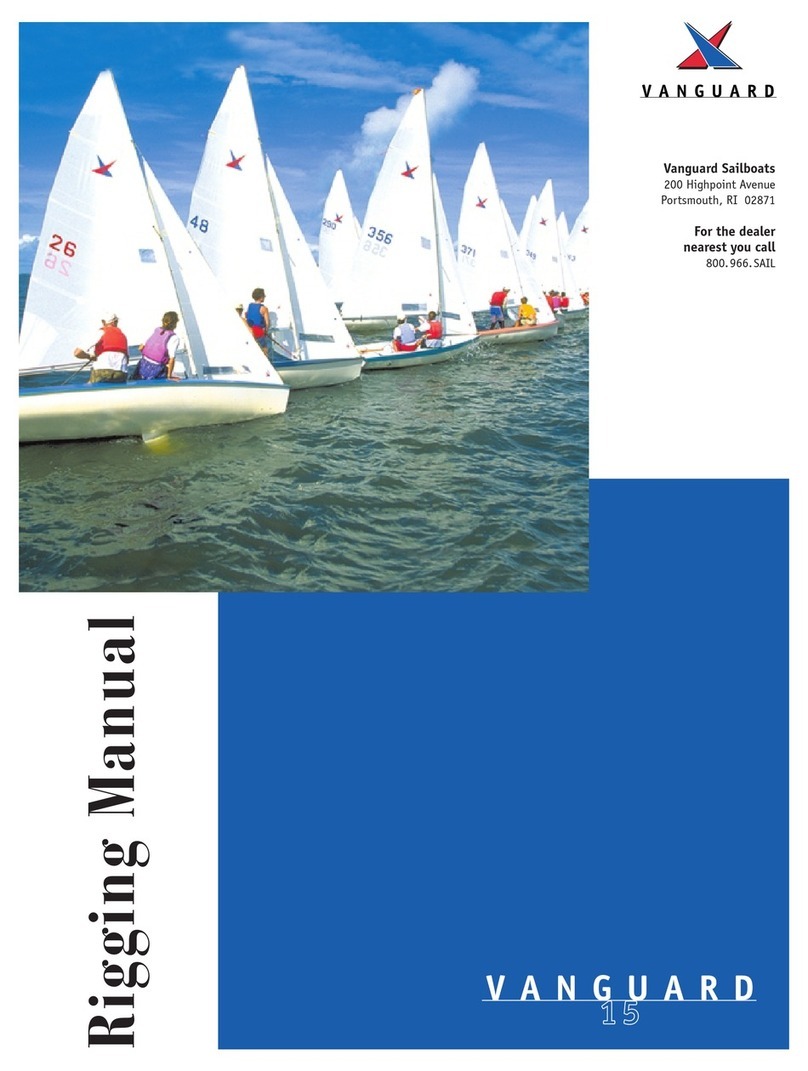1. INTRODUCTION
This manual has been written to help you use your boat safely and to your
satisfaction. It includes details of the RIB, the equipment supplied or installed, its
systems and information about its operation, adjustment, maintenance, risk
prevention and risk management. Please read it carefully, and familiarize yourself
with the RIB before using it.
This owner's manual is not a course in boating safety or a sailing course. If this is
your first RIB, or if you have changed to a RIB which you are not familiar with, for
your own safety and comfort make sure you get some experience in handling and
use of the RIB before taking over command. Your vendor/sales office/distributor,
sailing federations or sailing clubs will be delighted to recommend local sailing
schools or competent instructors.
Make sure that the expected wind and sea conditions correspond to the design
category of your boat, and that you and your crew are able to safely steer the boat in
these conditions.
Even though the RIB may be of the corresponding category, both sea and wind
conditions corresponding to design categories A, B, and C vary from very rough
weather for category A, to severe sea conditions for the top of category C, beside the
danger of abnormal waves or wind gusts. These are therefore dangerous conditions,
in which only an experienced crew, in good shape and trained, handling a well
maintained boat, can navigate satisfactorily.
This manual is not a detailed maintenance or repair guide. In case of difficulty, please
contact the boat builder or the boat builder's representative. If you have been
provided with a maintenance manual, use it for this purpose.
Always use the services of an experienced and competent professional for
maintenance, as well as for repairs or modifications. Modifications that may affect the
safety characteristics of the boat must be evaluated, executed and documented by
competent personnel. The boat builder cannot be responsible for modifications that
the boat builder has not approved.
In some countries a driver's license or authorization is required, in addition to specific
regulations and transportation requirements that may be subject to local regulations.
Always maintain your boat properly, and be aware of deterioration due to ageing, and
excessive or inappropriate use.
Any type of RIB, no matter how strong, can be seriously damaged if misused. Inspect
your boat regularly, especially if you suspect damage. Always adjust the speed and
direction of the boat to the sea conditions.
If your RIB is equipped with a life raft, read its owner's manual carefully. The boat
should have on board the appropriate safety equipment (life jackets, harnesses, etc.)
according to the type of boat, weather conditions, etc. This equipment is mandatory
in some countries. The crew should become familiar with the use of all safety
equipment and with emergency maneuvers (falling of persons into the sea and re-
boarding, towing, etc.). Sailing schools and clubs regularly organize training
sessions.
All persons should wear a suitable personal flotation device (life jacket/personal
flotation device) when on deck. It is noted that in some countries it is mandatory to







